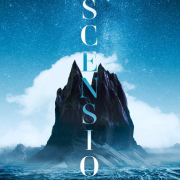Bingeing on science faction
Ascension, by Nicholas Binge, Harper Collins
Pseudoscience stuff’s good clean fun, right? Why shouldn’t the world’s crust just ripple up and accelerate the movement of land masses like Pangea, Gondwanaland and Pannotia to a couple of million years rather than the eons we thought?
Authors like Graeme Hancock, and more than few psycho creation scientists, will try to convince you it’s all possible, even true. The world’s fossils were all buried in Noah’s cloudburst of 2348 BC. Six days fair slog and a day off on Sunday, all that.
Others writers, like Ian Plimer, are lauded for eviscerating the God-botherer science revisionists with common sense but spurned for doing the same to climate zealots. Yep, science is all good fun until someone loses an eye. But colour its reason and evidence with politics, religion, activism, fraud or other shape-shifting and that’s what you’ll get. And worse.
Nicholas Binge, however, seems more bent on fun than mischief with his Ascension fable of a giant mountain that springs up in the Pacific Ocean, drawing an autocratic monied/warmongering/science-led expedition – it’s a little unclear which for a while – to investigate its singular peculiarities. And he’s having a lot of fun.
Singularity’s probably a better term because there’s a good bit of space-time continuum shape-shifting as Binge coerces a crew of physicists, anthropologists, medicos, biologists, ethicists, mercenaries and explorers onto the mountain and points them upwards.
Strange things are happening, as protagonist Harry Tunmore smartly learns. Old friends can see the future, predict card turns perfectly, amid a catatonia punctuating by ramblings about time, about watching the seconds. But they self-immolate before exploiting their new skills in the casino.
And they’re the smart ones. So you imagine what the wild-eyed soldiers of fortune make of things as time moves back and forwards, dead people come and go before their eyes, unearthly life forms start as microbes before infecting everything, as alien creatures from beneath the ice attack.
Yep, here there be monsters, as the old cartographers cautioned of uncharted waters. And they’re getting into everyone’s brain as the mountain, a good bit taller than Everest incidentally, lures everyone higher.
Brutal cold, hypoxia, paranoia and open hostility colour the research mission as it moves painfully higher. And the body count mounts as Harry tries to fathom what the devil’s going on, why his personal life is a disaster, how to survive his own expedition members as much as the creatures and why on earth the mountain’s luring them all higher like a physical hunger.
But Harry’s sharp physicist grey matter nuts out what’s going on and how to traverse the monolith. In a fashion, that is, his road map’s an inter-dimensional thingo which leaves a lot to be desired. But like TV’s It’s About Time, never know if you’ll wind up in the Stone Age with Gronk or in New York City, still with Gronk.
The physics, existential philosophy and violence make for a good rollicking yarn. Just don’t ask why Harry’s abandoned his family yet happy to relay his deeply personal story in letters of extraordinary minutiae to his 14-year-old niece. Or why he’s constantly writing them while trying to escape death climbing up a mountain, for that matter.
It’s a mechanism, I suppose. You know the drum. Don’t let reality, let alone facts or science, get in the way of a good narrative. After all, what do those scientists know?
Take the Big Bang, for instance. That’s a once upon a time story if ever I heard one. Here’s a poser for you. What was there beforehand?
Please don’t tell me fairies ….

